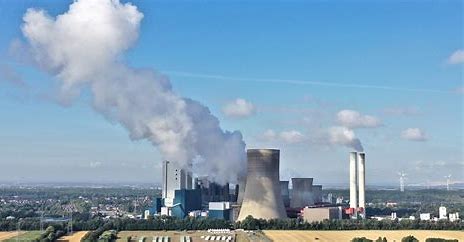
China’s pledge to stop financing new coal plants abroad, announced by President Xi Jinping at the United Nations summit last week, has raised hopes that the world could soon wean itself off the most carbon-intensive fossil fuel. But although this is a positive step from the world’s biggest emitter of carbon emissions, researchers say that China is a long way from phasing out its massive domestic use of coal.
“China’s economy still relies heavily on coal,” says Ottmar Edenhofer, director of the Mercator Research Institute on Global Commons and Climate Change in Berlin. “Stopping coal finance abroad is an important step, but China is a long way from phasing out coal altogether.”
Despite the country’s plans to become carbon neutral by 2060, its domestic coal production has nearly tripled since 2001. By contrast, the amount of coal produced in the United States and Europe has roughly halved over this time. China accounted for more than half of the 7.7 billion tonnes of coal produced globally in 2020, dwarfing the contributions of the next biggest producers.
But China also finances the construction of coal-fired power plants in many other countries, to help Chinese energy businesses profit from overseas markets. Overall, China finances enough coal power abroad to produce 42 gigawatts of electricity – enough to power at least 30 million homes.
Most of this money flows to Bangladesh, Vietnam, Mongolia and Indonesia, but many African countries and some European nations also receive significant amounts.
China commissioned 38.4 GW of new coal plants last year, 76 per cent of the global total of new coal-fired power plants, according to the non-profit organization Global Energy Monitor.
Experts say that halting the financing of these coal-power projects is a good start, but add that the emissions they produce are dwarfed by those generated by the 1,000 GW of coal-power that China generates domestically. This is more than four times the capacity of either India or the United States, which are the next biggest generators of coal power.
“China’s current and future domestic coal power is more important for the climate than anything that is likely to be built abroad in the future,” says Jan Ivar Korsbakken, an energy-policy specialist at the Centre for International Climate Research in Oslo.
In Europe and the United States, coal power has been declining noticeably in recent decades. Despite former US president Donald Trump’s promise to revive the industry, very little capacity was added during his four-year term, whereas 52.4 GW of coal-fired plants were retired.
The phasing out of coal has been slower in Europe, but EU countries have retired more than 17 GW of capacity since 2019 – led by Spain, which closed half of its coal-fired power stations in 2020.
Leaders of the G7 group of advanced economies – consisting of Canada, France, Germany, Italy, Japan, the United Kingdom and the United States – agreed in May to halt the international financing of coal projects.
But the almost 2,500 coal-power stations operating in the world today might still emit more than 200 billion tonnes of carbon dioxide over their lifetimes, making it hard to rein in global warming to 1.5 °C above pre-industrial temperatures.
“The 1.5 °C goal is out of reach if coal-fired plants aren’t replaced by cleaner energy technologies very soon,” says Edenhofer. “Alas, an end of coal is not yet in sight.”
- A Nature report











